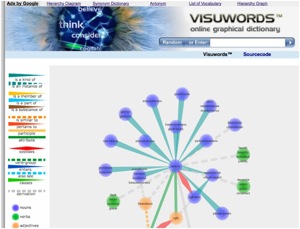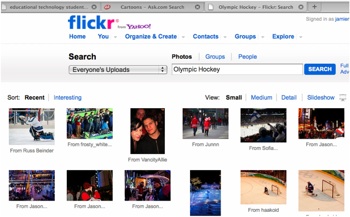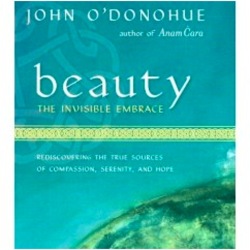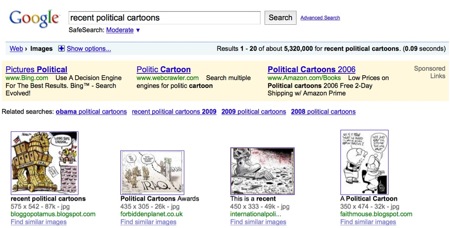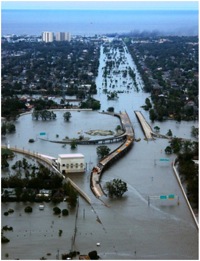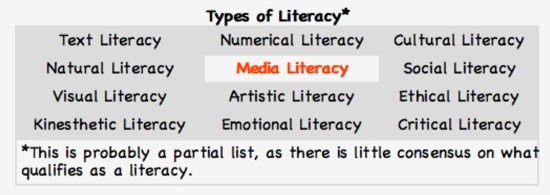
fno.org
|
|
| Vol 19|No 4|March2010 | |
| Please feel free to e-mail this article to a friend, a principal, a parent, a colleague, a teacher librarian, a college professor, a poet, a magician, a vendor, an artist, a juggler, a student, a news reporter or to anyone else you think might enjoy it. | |||||||||||||||||||||||||||||||||||||||||||||
Beauty and the Beast: Using Digital Riches to Enhance LearningBy Jamie McKenzie, ©2010, all rights reserved.About author This article is based on a keynote presented at the 2010 conference of ASTE (The Alaska Society for Technology in Education) in Anchorage during February. |
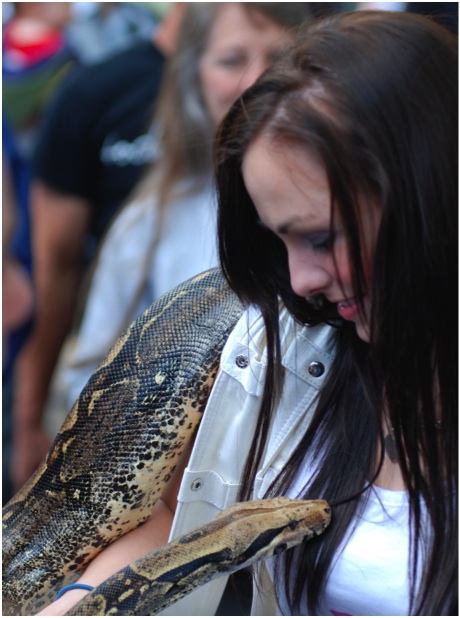 Jamie McKenzie, ©2010, all rights reserved. Image of Seattle Folklife 2007 |
||||||||||||||||||||||||||||||||||||||||||||
|
Digital resources can be a blessing to both teachers and students, bringing a richness to learning that is dramatically different from what was available to schools four decades ago. At the same time, the shift of popular culture to embrace such digital possibilities often entails risks, difficulties and liabilities that usually go unmentioned by cheerleaders and digital promoters. This article takes a more balanced perspective, celebrating the benefits while identifying those risks. It has become popular in recent years to set "Learning in a Digital World" as the theme of educational conferences — especially those devoted to educational technologies — but some of us do not believe this is a digital world. One can extol the many benefits of digital resources without surrendering to the enthusiastic labelling (and marketing) of the digital promoters. I prefer a more sensory rich way of envisioning the world — one more in line with Thoreau's famous quotation, "In Wildness is the preservation of the world." It was such an honor to present this perspective at ASTE's conference — as Alaskans would be especially tuned into the advantages of wildness, wilderness and the natural world. In May 2008 I published the article "What Digital Age?" challenging the digital label. This current article builds on some of the reservations expressed in that article but also makes a strong case for the blessings of digital resources — seeking a balance between enthusiasm and criticism.
Digital Riches
Flying at 36,000 feetOne day on a long flight to Australia, I was reading about a cellist in The Spanish Bow, a wonderful novel by an Alaskan — Andromeda Romano-Lax.
|
|||||||||||||||||||||||||||||||||||||||||||||
 Jamie McKenzie, ©2010, all rights reserved. |
There are serious issues raised by the new technologies, but the wonderful beast on the left made a good symbol of these potential threats because most of them can be turned around into benefits if they are addressed conscientiously by those planning school programs. This need not be a Rocky Horror Picture Show, provided leaders act sensibly. |
Potential issues to be addressed in some detail later in this article are listed below:
- Poverty of Abundance
- Age of Glib
- Wikilobbying
- Edutainment
- The New Plagiarism
- Cut-and-Paste Thinking
- Social Isolation
- Distraction
- Frenzy
Acting sensibly? There are several broad strategies that are worthy of consideration:
- Knowing when to go unplugged
- Picking the right tools for the job
- Avoiding bandwagons
- Maintaining intimacy
- Producing inventive, high quality work
As will be outlined later in the article, these strategies can protect a school and its students from the threats listed and bring focus to the many benefits available because of the digital riches.
|
"In wildness is the preservation of the world."
|
Thoreau's words are worth remembering when some claim this is a digital world. Schools would be wise to maintain a sense of balance that cherishes the natural world while enjoying the best of the new digital possibilities. |
Relying upon Information Literacies to Tip the Balance
Those schools that equip all students with a strong set of information literacy skills stand a good chance of tipping the balance so that the availability of digital tools and resources is more likely to a blessing rather than a threat.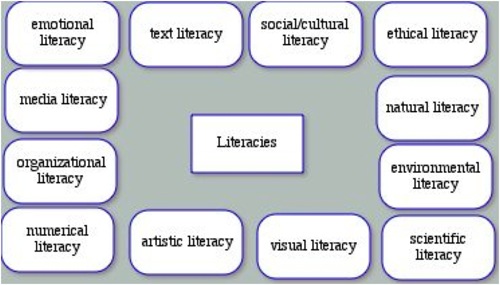
Because a literacy is the capacity to make sense of information within a particular category or domain, that comprehension skill insulates students against manipulation, acquaints them with distortion and prepares them to probe past surface claims to see whether they are well founded. Many of the risks that will be outlined later in this article will be less of an issue if students are astute. Related words from the American Writer's Thesaurus are worth of note:
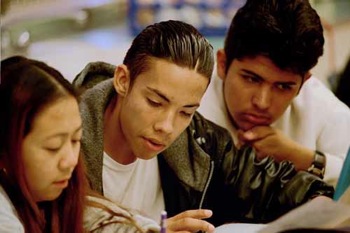 shrewd, sharp, acute, adroit
shrewd, sharp, acute, adroit
- quick, clever, crafty
- intelligent, bright, smart
- canny, intuitive
- perceptive, insightful
- incisive
- sagacious
- wise
- quick, clever, crafty
Jamie McKenzie, ©2010, all rights reserved.
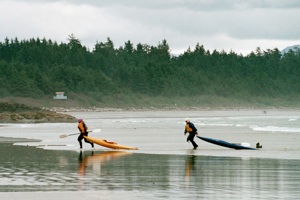 Properly tutored, students should be able to "read" the currents along a beach (natural literacy), "read" a climate database (numeracy), "read" body language (cultural or social literacy) or think critically about an ad (media, visual, artistic, social and musical literacy).
Properly tutored, students should be able to "read" the currents along a beach (natural literacy), "read" a climate database (numeracy), "read" body language (cultural or social literacy) or think critically about an ad (media, visual, artistic, social and musical literacy).
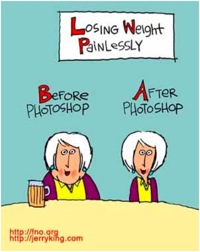
We make sure that all students understand the term "Photoshopping Reality" as a metaphor for distortion and help them to understand that portrait painters, historians and others started Photoshopping Reality long before the software appeared.
Dove Onslaught (below) is an especially effective video to help students think about Photoshopping Reality.
Dove Onslaught available at
the Dove Self-Esteem Fund
reproduced here with permission from Dove.
Teaching Students to Value Originality
In a cut-and-paste culture, when many are encouraged to scoop up the thoughts, advice and suggestions of others without carefully examining them, students should be helped to understand the value of original thought and production. The Taxonomy pictured below was designed to help them differentiate between scooping, smushing and more powerful levels of synthesis.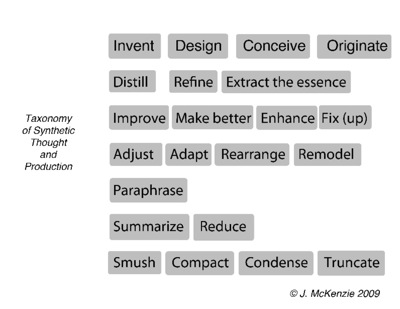
"A Taxonomy of Synthetic Thought and Production" is available at http://www.fno.org/may09/synthesis.html
- Why a taxonomy?
Not all synthesis requires thought, originality or imagination. The mere act of squishing a bunch of information together — smooshing or smushing or compacting a heap of facts — is low grade synthesis. It requires little thought.
The creation of a poem, a garden, a symphony or a good bottle of wine is quite a different matter.
A taxonomy provides clarity about levels of challenge and value - as with the taxonomies created by Bloom for Affective and Cognitive domains.
By alerting teachers and students to these levels, we hope to inspire production at a high level of originality and creativity.
One can ask students to consider the Slob Evolution video below — a parody of the Dove Evolution video — and decide where they would place the work on the Taxonomy. Is it just a "knock-off" or did the producers show a high level of originality?
Examples of Rich Digital Content
As mentioned briefly earlier in this article, the resources now available thanks to new information technologies can be quite splendid. This section examines examples of the characteristics listed in the diagram below and makes comparisons when appropriate with what was available to schools a few decades back :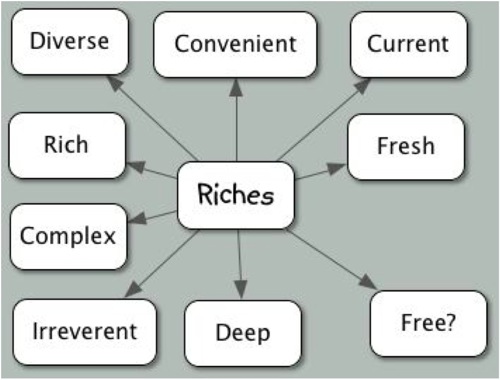
RichOur students can now visit online museums such as the USA National Gallery of Art or the Sydney Art Gallery and profit from thousands of truly gorgeous images that would have required quite a bit of travel to see back in the 1980s. While a school library in the 1980s could purchase several dozen printed images as posters for what was called "the vertical file," we have a far richer collection available now. Even though a high quality printed poster may have its advantages in terms of clarity and size, those museums with excellent collections and good interfaces bring students what amounts to visual opulence compared to the menu available in schools prior to the Net. |

The collection in the National Gallery of Art pictured above (visit) is extensive and well organized — a true visual feast. The link takes you to a Winslow Homer painting that is a favorite of mine. But, rich as the offerings may be, the interface is somewhat limited, allowing in most cases just two sizes and not much zooming in to look more carefully. This becomes an important issue when asking students to interpret images. The Thinker.org (The San Francisco Fine Arts Museums) provides a much better interface so that users can zoom without pixilation, but it suffers from a poorly structured database that has few meta tags associated with each image, so the user may have trouble finding images. Constructed originally for inventory purposes, rather than searching, the database can be frustrating. It helped me understand what I ended up calling "the poverty of abundance" to be mentioned in some detail later in this article. Corbis.com provides an excellent example of both an effective user interface as well as a well constructed database. Selling stock photography to the advertising world, Corbis helps busy art directors find "kittens drinking milk" or "old men skiing" with excellent results. |
Convenient
Not so long ago, you had to sit down at a desktop computer to take advantage of great digital resources. As we moved to wireless laptops, the ease of access improved dramatically. With the advent of the Smart Phone and 3G networks, the convenience improved tenfold. |
Smart phones, laptops, tablets and a whole array of exciting devices have put great resources right into our hands. The picture on the left shows me checking currency values on a flight at 36,000 feet (in airplane mode). That iPhone also offers me Shakespeare's entire collection of plays as well as Alice in Wonderland, T.S. Eliot's poems and a few dozen Apps that seem magical. It holds 2509 songs or musical pieces such as the Bach Suites mentioned earlier as well as 623 photographs.
TripTracker gives me a scrolling list of every hotel, air and rental car reservation I have made up to December of 2010, integrating the records from a dozen companies into a single list. Convenient? Absolutely. |
FreshCoverage of events like the Olympics sometimes appears more rapidly on social networking sites like FLICKR and Twitter than on more traditional news outlets. Several decades back we had to rely upon evening news on TV and printed newspapers and magazines to inform us of these events, and this coverage, in addition to being delayed, was often both limited and filtered. Coverage of this year's Winter Olympics in Vancouver was strangely delayed and filtered by NBC in order to maximize profits, so it was sometimes hard to see events like hockey games. |
CurrentThe information about foreign countries and nonfiction topics available in schools obsolesced rapidly back in the 1950s, 1960s, and 1970s as the cost of replacing books about these topics in a timely fashion was prohibitive. You could walk into many school libraries and find that 80-90% of their collection of other countries and various scientific topics might be 15-40 years old. When the library's encyclopedia was finally replaced, the old one was often scooped up by teachers for their classrooms.The arrival of electronic encyclopedias in the early 1990s signalled a dramatic shift in the way students might learn about the world and created a flow of information that was updated much more frequently than it had been in the past. Schools that had been showing 20 year old 16mm films portraying life in other countries, began to see the distortions created by relying on such dated materials. The information available now is far superior in many respects, although it sometimes suffers from a focus on a tourist's view. Many of the Web sites describing other nations are offered by groups eager to attract travellers. There is some danger that our students will pick up current information that has been "disneyfied" — shaped to entertain, attract and appeal. |
 Jamie McKenzie, ©2010, all rights reserved. In 2002, I called this challenge of learning about other countries, "Other Worldly Research." If students begin their study by creating a complete mind map identifying all of the facets of a city, they are more apt to emerge from their investigations with a full picture. They are less apt to take at face value the portrait offered by the city and its promoters.
|
DeepSome of the best thinkers, poets, philosophers and dreamers are now readily available online through videos, audio interviews and blogs. In the 1960s and 1970s you had to go to a record store or book store to find such works, and the choices were often quite limited compared to what can now be found while sitting just about anywhere with wireless and a smart phone. I first discovered John O'Donohue's amazing thoughts about beauty through Google and the NPR Web site, listening to his interview. His thoughts were so profound and his language so lyrical, I had to download the interview and listen to some sections over and over. I then bought his printed book. His thoughts are an inspiration. |
Working on the concept of beauty with a group of ninth grade girls in New Zealand, a few years ago, I wondered how they would react to this interview — how they might listen and appreciate or shut down. I could tell by watching that many of them were touched almost to the point of tears. |
IrreverentInterested in political controversy? Cartoons that are politically incorrect? Attacks on the current President? Criticism of Presidents past? Criticism of the critics and the pundits? It is all readily available. |
Just go to Google and type "recent political cartoons" and the resulting collection is quite impressive. Why do we want our students to consult such sources? The health of any democracy depends to some extent on lively debate and dissent. When such thinking is stifled or punished, we are at risk. In Orwell's 1984, the state did what it could to end "crime-think." |
DiverseIt is possible for our students to tap into the thinking of people from many other nations in ways that were not possible a few decades ago. In the 1970s they had to send off for materials from consulates and embassies, waiting for weeks until something might come back in the mail. For those lucky enough to live near a university, it might be possible to buy international magazines and newspapers, but they were often several days or a week out of date. Now they can surf from newspaper to newspaper at sites like http://www.newspaperindex.com/ and read the latest news real time from hundreds of cities - gaining a sense of world opinion that frees them to some extent from the mainstream press in countries like the U.S. that have suffered from consolidation. |
In addition to the diversity available through online newspapers, blogs now offer independent points of view and reporting that often stands in contrast with the mainstream press. |
Free?Are these digital riches truly free? Or do they come with costs that are not apparent? On the surface, it does seem remarkable that we have so many museums and so much information available to us without spending a dime. Of course, the cost of the equipment required and the cost of access might be sizable, but once online, what are the costs?The two main costs that come to mind are the advertising that appears almost everywhere and the distortions that creep into material as groups offer free information that is shaped to meet their goals. |
There really is no free lunch, sadly. |
Back to the Beast 
Early in this article, I pointed out that the many benefits that come to us from digital resources are offset by threats and risks. While these risks can be managed in positive ways by savvy schools, they can have a strong impact on the young if leaders jump on bandwagons uncritically and imagine that there is nothing to worry about. In this next section, the article will examine each of the threats and suggest ways to reduce their impact and damage.Jamie McKenzie, ©2010, all rights reserved.
The Poverty of Abundance
The Age of Glib
Wikilobbying
Edutainment
The New Plagiarism
Cut-and-Paste Thinking
Social Isolation
Distraction
Frenzy
The Poverty of AbundanceIronically, there are times when there are so many thousands of images, badly organized, that is difficult to find the image that is needed. The same challenge applies to all categories of in formation - whether they be databases or text files. The patient diagnosed with breast or prostate cancer looks to Google for wisdom and finds there are millions of Web pages claiming to help with the decision-making. It is difficult to tell which of these are trustworthy. One quickly learns that quality is much more important than quantity. |
 Jamie McKenzie, ©2010, all rights reserved. There is lots of information, but some of it is just plain rubbish. Google quickly sends students to Wikipedia's articles often written by amateurs and zealots. The democratization of information production is appealing when learning about restaurants and night spots, but it can be a bit troubling when reading about a law such as "No Child Left Behind" or deciding upon a treatment for cancer. |
The Age of GlibThe speed with which the young may access information sometimes seduces them into superficial thinking - gliding along the surface without actually probing to figure out how much logic and evidence exists to substantiate the claims being made. |
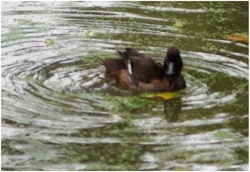 Jamie McKenzie, ©2010, all rights reserved. Years ago, a class I had researching threats to Antarctica were listing ducks. When they looked for "threats" and "Antarctica" the article on ducks appeared on the list of hits. Many students listed ducks as a threat without actually bothering to read the article. |
WikilobbyingStephen Colbert coined the term in the show depicted on the right. “This is the essence of Wikilobbying, when money determines Wikipedia entries, reality has become a commodity.” Wikipedia attracts many more readers that traditional encyclopedias, even though its entries are often warped by personal bias, institutional agendas and simple ignorance. The evidence of bias is quite chilling as reported by the New York Times in the article, "Seeing Corporate Fingerprints in Wikipedia Edits." |
EdutainmentThere are some who would pander to the entertainment wishes of the young, turning most learning into an arcade experiences. In 2000 I warned against this temptation in "Beyond Edutainment and Technotainment:"
|
 Jamie McKenzie, ©2010, all rights reserved. Even though the notion is weakly supported with evidence, one speaker has promoted the idea that students are "digital natives" who respond best to video games. Sadly, the educational technology community sometimes jumps on bandwagons and trendy fashions without probing to see if they might provide real benefits. Note "Digital Nativism, Digital Delusions, and Digital Deprivation" |
The New PlagiarismMany teachers have complained about what they see as an increase in the amount of plagiarism that has accompanied the arrival of the Internet. "The New Plagiarism: Seven Antidotes to Prevent Highway Robbery in an Electronic Age" first appeared in 1998, but the trend has continued to cause concern. Google offers 3,190,000 Web pages for "school plagiarism." The electronic shovel has proven extremely tempting. |
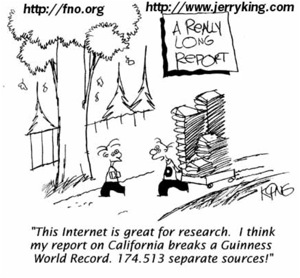 |
|
|
Cut-and-Paste ThinkingClosely associated with plagiarism is the willingness of many students to collect the ideas of others without doing any thinking of their own. They may properly cite their sources, but they are essentially collecting and recycling rather than adding value or doing any independent thought. Their work belongs at the bottom of the "Taxonomy of Synthetic Thought and Production" mentioned earlier in this article. They scoop and smush. http://www.fno.org/may09/synthesis.html This is such a dramatic problem for educators across the globe that I devoted an entire book to the subject. http://fno.org/nov08/beyondca.htmlThe consequences for the society are potentially tragic as we raise leaders incapable of thinking the unthinkable or managing catastrophes like Katrina (pictured on the left):
Cut-and-paste thinking is not up to meeting the challenges thrown at leaders and citizens of this century. |
Social IsolationFor all the talk of social networking and collaboration, new technologies can separate and isolate, replacing face-to-face intimacy with second, third and fourth lives as families may sit at a restaurant table busily texting those not sitting at the table or zapping aliens on a game machine. The technologies can link us, but mere gathering is not the same as intimacy or collaboration. For adolescents, the temptations of online life can represent an escape from the more trying complications of face-to-face relationships. For adults, retreat into virtual existence carries with it some serious risks. Katie Couric devoted a segment on CBS to Internet Addiction. NetAddiction.com is a site devoted to the treatment and study of this disorder.The Alliance for Childhood has launched a major campaign to counter a number of disturbing trends:
|
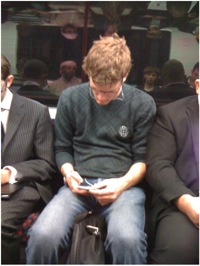 Jamie McKenzie, ©2010, all rights reserved. Back in 2000, Don Henley wrote the song, "They're Not Here, They're Not Coming" in which he lamented . . .
Despite all the hype about new technologies, there are significant risks to childhood and culture that often go unexamined. The Kaiser Family Foundation published an extensive study of young people's media habits in January of 2010 . . .
|
DistractionThe Kaiser Family study mentioned above describes a generation that is spread out on a continuum defying simple generalizations, yet many observers are quick to define, oversimplify and generalize. Some members of this group have trouble managing multi-tasking while others seem to do just fine.This past week I found a column in the Sonoma Press Democrat exploring the digital temptations faced by today's high school students — "Can electronic distractions hurt your grades?" It begins with a question from Kelly, who reports that her grades are low and wonders if her Facebook and musical activities might have contributed. A panel of teens weighs in suggesting that digital distractions can hurt performance. The column ends with the statement, "Recall the Hewlett Packard-commissioned study that showed that responding to text and emails while doing other tasks dropped a person's IQ more than twice as much as being stoned on pot." |
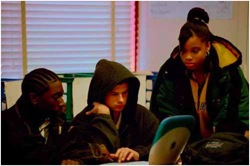 Jamie McKenzie, ©2010, all rights reserved. The column mentioned at the left is from www.straighttalkforteens.com It is difficult to find the study mentioned on the left. Various Web links to the document have disappeared from The HP Web site and when one reads the newspaper summaries, the claims made seem scantily documented, based on just 60 clinical trials and the dubious notion that IQ declines immediately upon experiencing either pot or email. http://kurtsh.spaces.live.com/blog/ Pretty dramatic headline and finding, eh? But HP seems to have distanced itself by removing the following links: http://h41131.www4.hp.com/uk/en/pr/ The Hierarchy of Digital DistractionsOne of the most entertaining and illuminating attempts to explore distraction is this visual hierarchy created by David McCandless.It is difficult to find conclusive, reliable rsearch on this issue, but one group has started to collect pertinent studies at the Information Overload Resource Center http://iorgforum.org/ResourceCenter.htm |
FrenzyFleeting, Speeding, Frantic - ThinThe Poet John O'Donohue, whose interview on NPR was included earlier in this article, expressed serious concerns about the impact of technologies on our sense of time:
|
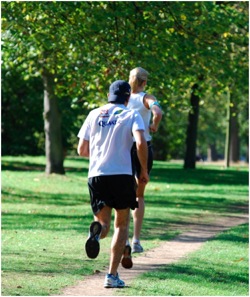 Jamie McKenzie, ©2010, all rights reserved.
This rush or frenzy comes into direct conflict with the possibility of reflecting or considering deeply, as Sven Birkerts laments in The Gutenberg Elegies:
|
The Antidotes:
An Emphasis on Comprehension, Literacies and Questioning
As mentioned earlier, schools that equip students with the capacity to make up their own minds and think through the mysteries and conundrums of our times will have rendered the digital beast no beast at all. When students can form powerful questions and probe past surface meanings, they will mainly profit from the resources now available to them. Central to such a plan is the development of comprehension across a dozen or more literacies:
are pretty much negated.

Copyright Policy: Materials published in From Now On may be duplicated in hard copy format if unchanged in format and content for educational, nonprofit school district and university use only and may also be sent from person to person by e-mail. This copyright statement must be included. All other uses, transmissions and duplications are prohibited unless permission is granted expressly. Showing these pages remotely through frames is not permitted.
FNO is applying for formal copyright registration for articles.

Outline of chapters and description of book available here.
Order your copy of The Media Literacy Toolbox from the FNO Store
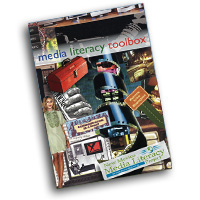

 The printed book in my hand combined with the digital resources on my laptop made for a great duet. This seemed a vivid example of digital resources enhancing the quality of life and learning.
The printed book in my hand combined with the digital resources on my laptop made for a great duet. This seemed a vivid example of digital resources enhancing the quality of life and learning.
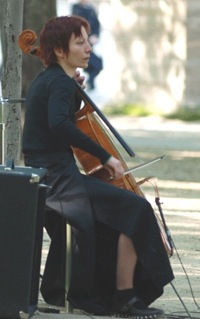
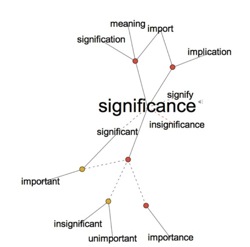 Mindware and Tools
Mindware and Tools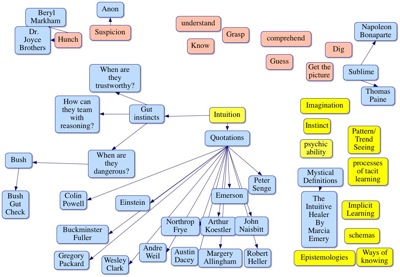 If we wish our students to develop an appreciation of complex ideas and an appetite for such understanding, sites like the Visual Thesaurus partner well with tools such as Inspiration™ or SmartIdeas™ that help them to map out their findings as shown on the left — a diagram I created when preparing to present workshops on intuition in New Zealand.
If we wish our students to develop an appreciation of complex ideas and an appetite for such understanding, sites like the Visual Thesaurus partner well with tools such as Inspiration™ or SmartIdeas™ that help them to map out their findings as shown on the left — a diagram I created when preparing to present workshops on intuition in New Zealand.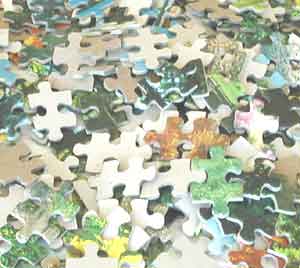 In September of 2005, I reviewed a number of these sites in "
In September of 2005, I reviewed a number of these sites in "

